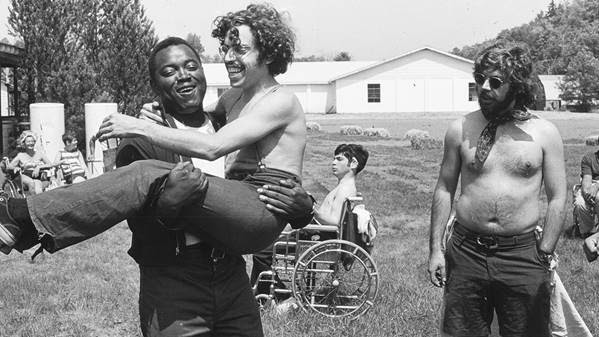Once upon a time, there was a summer camp in the Catskills region of upstate New York where physically challenged teens went to do the things kids the world over do at such places — play ball, steal a first kiss and laugh. A lot. Camp Jened — the inspiration for the superb new documentary Crip Camp: A Disability Revolution which debuted on Netflix yesterday — opened in 1951 but found its truest groove in the early 1970s when camp director Larry Allison brought in the era’s freewheeling notions of community and personal freedom.
The campers share stories about its history and the disability rights revolution it fostered. Being among other kids who faced the same challenges they faced each day was revelatory, and suddenly, after a lifetime of isolated rejection, they were surrounded by others who understood exactly how they felt. This was liberation.
Jim LeBrecht, who directed Crip Camp with Nicole Newnham, first went to Camp Jened when he was 15. Born with spina bifida, LeBrecht can be seen wheeling about the camp in amazing archival footage, shot from 1971-73 by the People’s Video Theater, a media activist group. “At camp,” LeBrecht recalls, “everybody had something going on with their body. It just wasn’t a big deal.”
Camp life could be complex, though. As in the outside world of teens, there was a pecking order that could be merciless, with polio kids at the top of the social food chain and those with cerebral palsy at the bottom. Over time, as the kids came to know each other, the stratifatications fell away, and friendships were formed based on common outlook, not shared disability. Laughter and music were bonding. Issues of race seemed largely nonexistent.
At summer camp, first love is always in the air, and so it was for the kids at Camp Jened as well. LeBrecht and others laugh uproariously as they recall make-out sessions behind the dining hall. In archival footage, the 15 to 18-year-old teens are pleased to report that there’s an STD making its way around the camp — a problem, yes, but a revolutionary one for a group of people the world sees as neutered, non-sexual beings.
When Congress passed the Rehabilitation Act of 1973, it seemed the fortunes of the disabled had finally changed. Section 504 of the Act granted equal access but the federal government didn’t enforce the law, so the American disabled community, led by Camp Jened luminary Judy Heumann, was forced to act. In a lovely touch, the directors pencil in the names of the many camp alumni who can be found in news footage of disability protest marches and sit-ins.
Heumann, whose heroic life story deserves to be dramatized in a biopic, galvanized a movement that would eventually face off against Richard Nixon, and later, Jimmy Carter’s intractable Health, Education and Welfare (HEW) Secretary, Joseph Califano. The sequences detailing the legendary 25-day sit-in at the HEW headquarters in San Francisco make for a movie unto themselves.
As we know only too well right now, politics and policy matter. But ultimately, the treasure in Crip Camp lies in its archival faces. Early on, the kids can be seen at rap roundtables discussing all manner of issues, including self-image and how they feel about their parents. At one point, a girl named Nancy talks passionately about her own concerns, but due to disability, her words aren’t formed in a way that can be understood. But the boy across the table understands and does his best to explain, in his own halting, determined speaking voice. He then asks Nancy if he got it right. He did. It’s a small moment in a big movie and it’s unforgettable.
Advertising disclosure: We may receive compensation for some of the links in our stories. Thank you for supporting LA Weekly and our advertisers.

